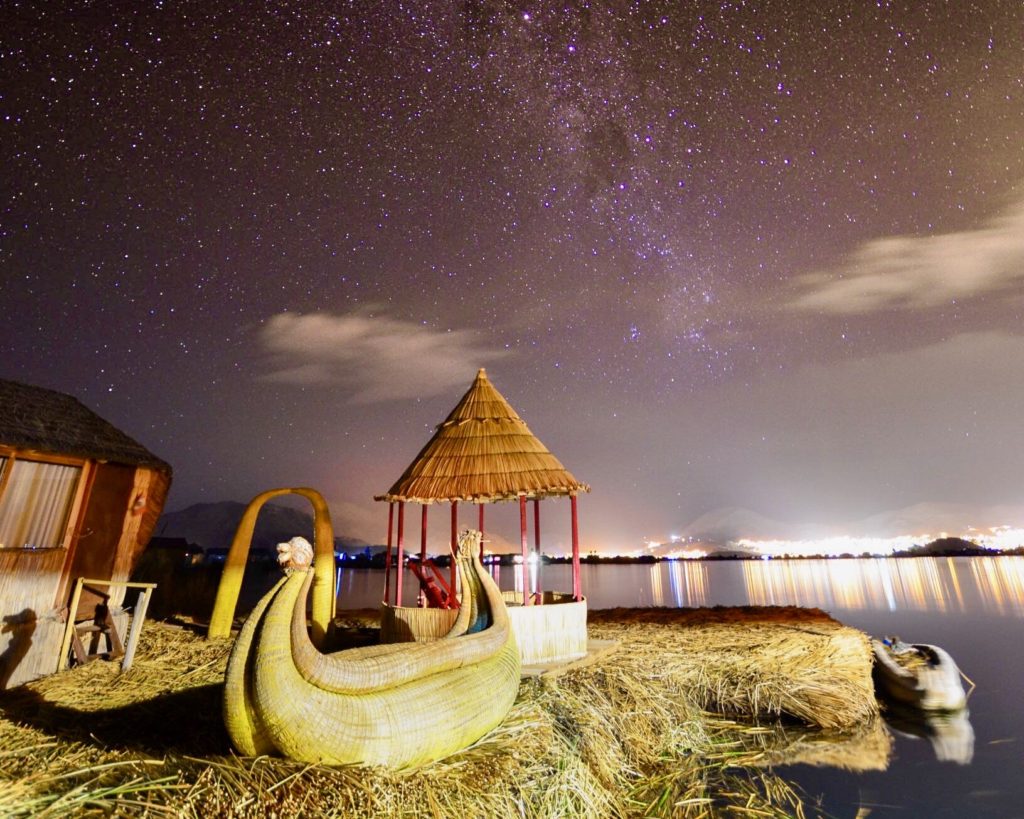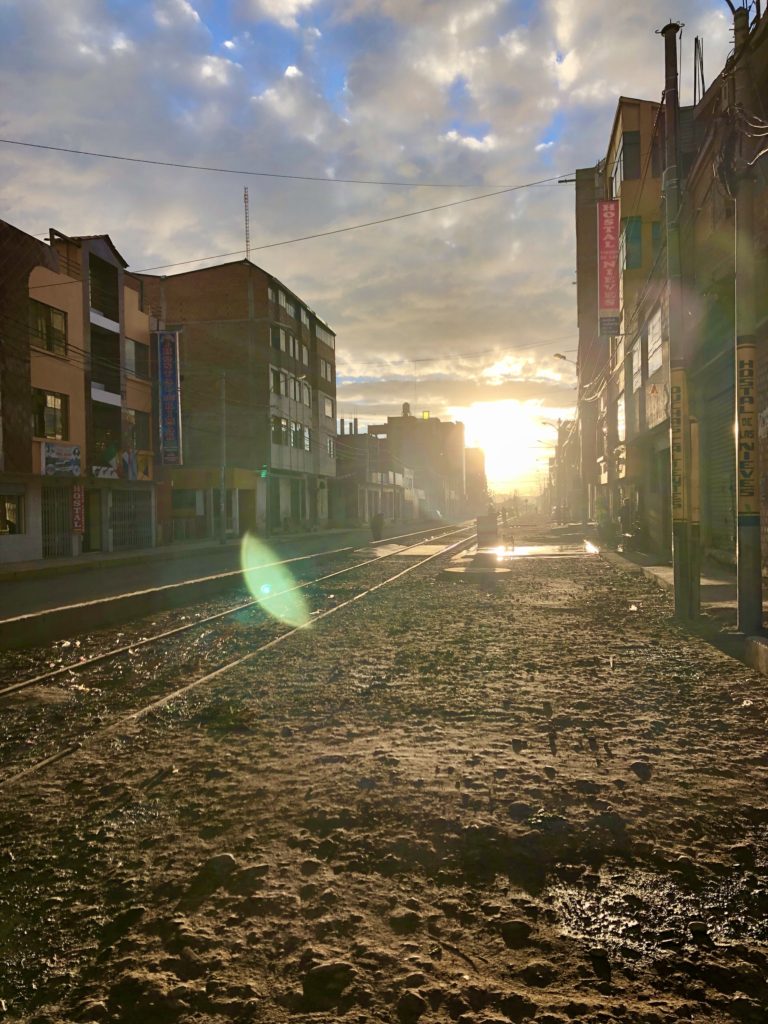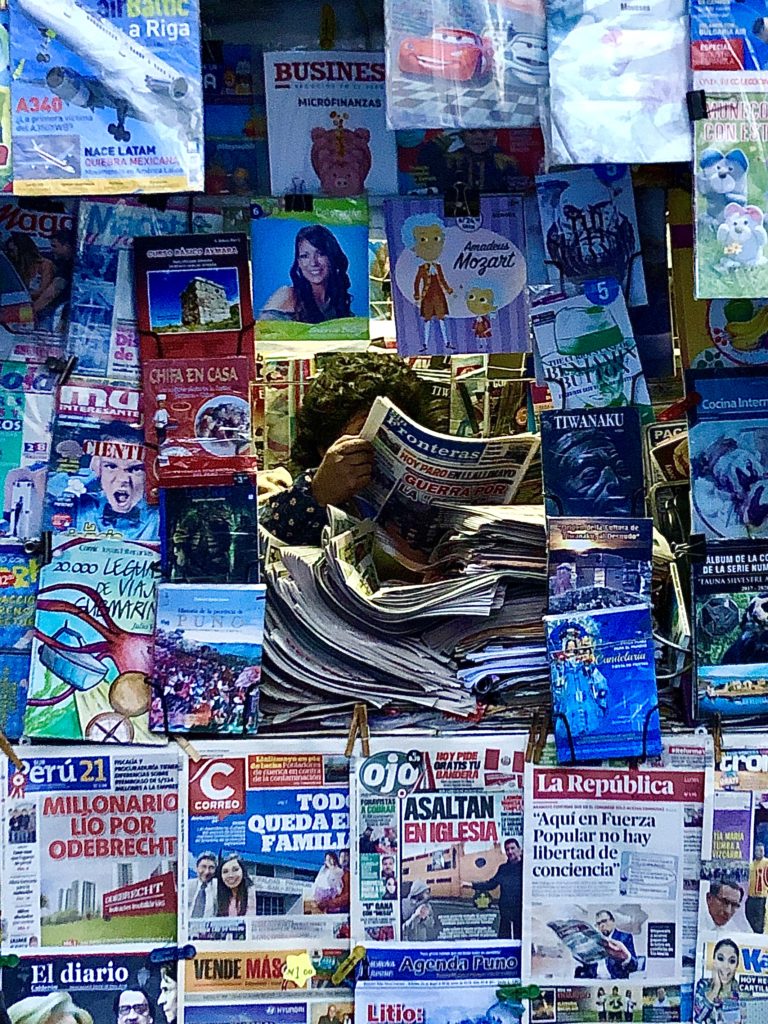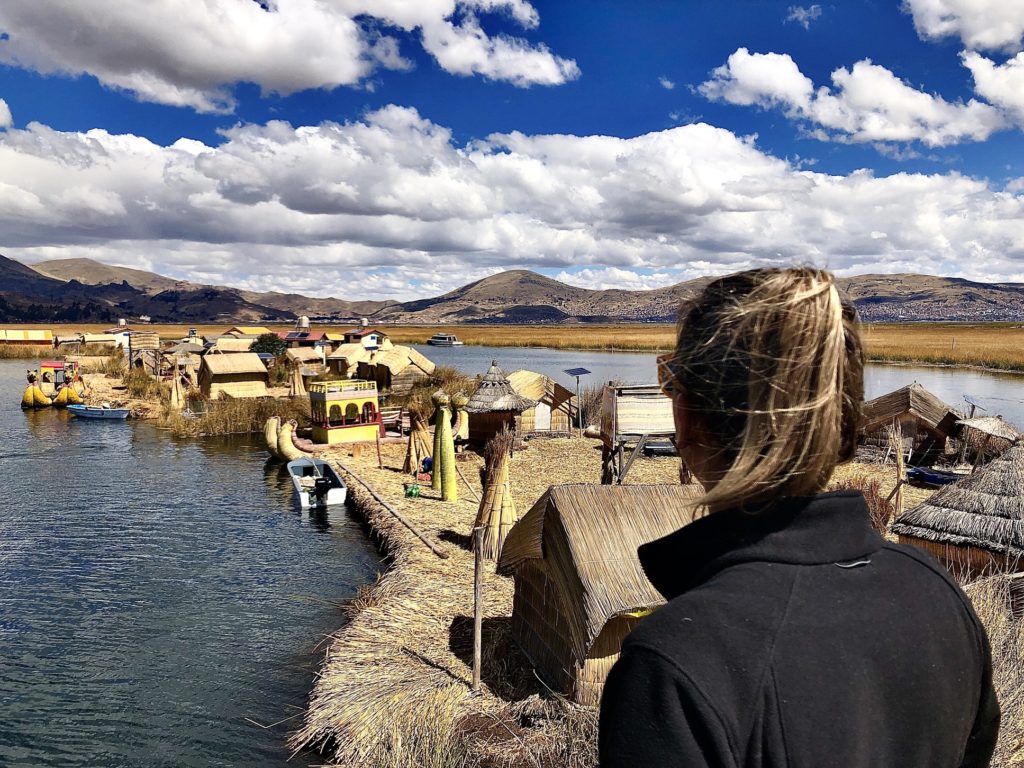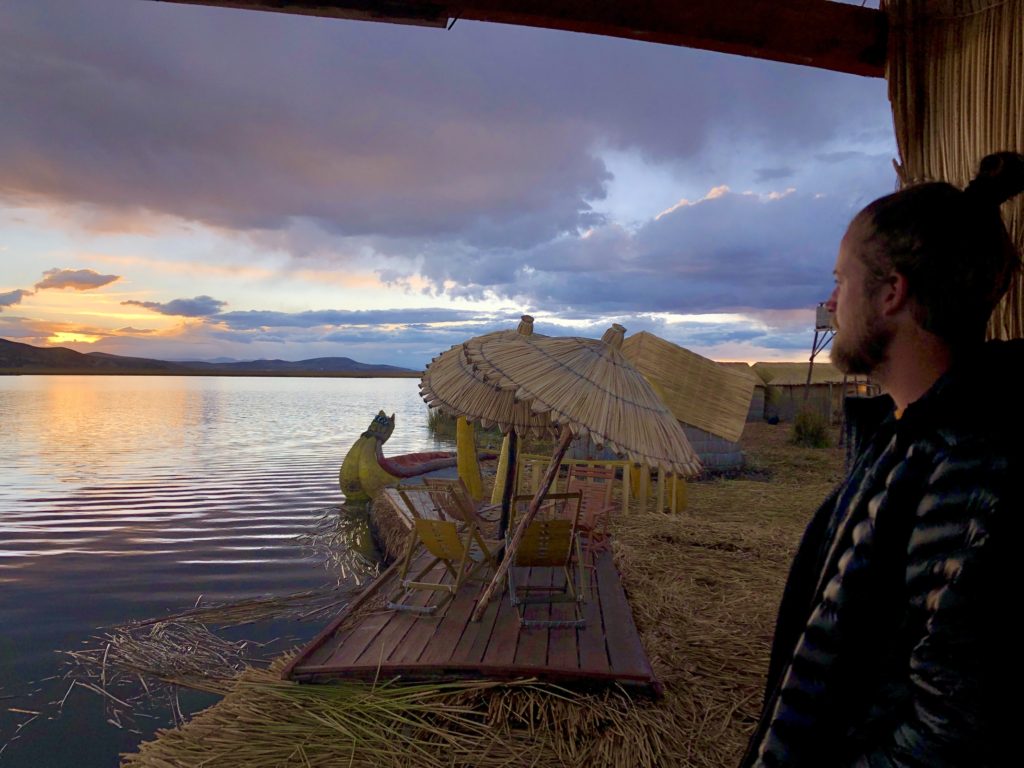Everyone has heard of Lake Titicaca. You may not have known exactly where in South America the lake is located or anything about it, but like me, you certainly know name. As was the case when we started planning for our trip to Peru. I said “Oh hey, I didn’t know Lake Titicaca was in Peru. We have to visit!”
In fact, Lake Titicaca is actually on the border of Peru and Bolivia high in the Andes Mountains. It’s the highest navigational lake in the world by depth and width, and has been inhabited by humans for at least 1,500 years. Ancient temples and ruins have been discovered underwater and were identified by archaeologists to belong to the Tiwanaku people. The origins of the lake’s name are unknown and believed to come from ancient Native Americans long before the Spanish arrived.
First Impressions of Puno
We found out in Arequipa, through our free walking tour guide, that the reason for so many incomplete buildings in Peru is a legal loophole stating that citizens don’t have to pay property taxes until after construction is complete on their building(s). Therefore throughout Peru you can see half built structures with exposed bebarb shooting out through the unfinished top floor of most homes, as well as commercial real estate.
This is very much the case in Puno where it is abundantly clear that the ascetics of the town take a backseat to forgoing payments on property taxes. The sad fact that Peruvians don’t trust what their government does with their tax dollars, combined with the fact that people need every little opportunity to get ahead, create the appearance of towns that feel underdeveloped and unloved.
If you’re headed to Lake Titicaca from anywhere in Peru then you’re going to have to arrive at the town of Puno. Puno isn’t the loveliest of towns to say the least, but that’s where our bus dropped us off, so that’s where we started.
I’ve heard the words “rackety charm” used to describe Puno on one particular travel site, but I’m not going to sugarcoat my feelings about the town. It’s downright ugly. You might think that a town on the shore of one of the world’s most famous lakes with such beautiful surroundings would have something to offer. Well I’m telling you right now, it doesn’t.
The Town of Puno
Our disappointment also continued to the shore of Lake Titicaca in Puno, where there is a depressing amount of cafes, restaurants and bars in a place where you’d expect to be able to enjoy serene landscape around Lake Titicaca. We did notice a hand-full of hostels, hotels, restaurants, and cafes in the center of town around the plaza that offered somewhat of a touristic experience, so I’ll tell you about those.
We arrived at the crack of dawn from Arequipa when we arrived and were in desperate need of breakfast and hot coffee. We walked from the bus station to downtown where we discovered our options were quite limited. We attempted to find one of the cafes on Google Maps and Map.me but they were all closed at such early hours. Fortunately one of us had the bright idea to ask one of the hotels in Plaza de Armas if we could crash their buffets for a fee.
Hotel Hacienda Plaza De Armas had no problem taking our credit card, and that was the first time in Peru that we had a full course western style breakfast with all the fixings that included eggs, potatoes, meat, toast, fruit, coffee, tea, orange juice, and more. For a couple hours we warmed up our frozen bones, filled up our tummies, and enjoyed their free wifi to make plans and contact home. They also offer suites with balconies overlooking Plaza De Armas at around 40 USD a night, if you’re looking to spend a night in Puno.
If you’re looking for a place to get a drink or grab a bite to eat, look no farther than La Casa del Corregidor, located in a historical monument dating back to 1668. Across the plaza, adjacent to Hotel Hacienda, you’ll find people from all over enjoying coffee, Peruvian craft beers, and tapas in a music themed cafe with indoor and outdoor patio seating.
Say you’re looking to spend a whole day around Puno and you want to venture out a bit, then you might want to consider taking a half-day trip out Sillustani, a pre-Incan cemetery about a 45 minute bus ride from town. You can spend about an hour and a half here checking out the ancient ruins (chullpas), as well as views of island in Lake Umayo.
Uros Floating Islands
The Uro people came to Lake Titicaca out of desperation while trying to escape the Incas when they arrived in the area. Instead of fighting the mighty Incas, they decided to hide from them, and what better place to hide than the middle of Lake Titicaca. But they couldn’t trap themselves on the already existing islands, they needed mobile islands that could move, hide and escape the Incas when necessary.
They created their mobile islands out of the living totora reeds that grow in the shallow shores of Lake Titicaca. They pack the reeds layer by layer until they have a floating island capable of navigating these frigid Andes waters. Each family would have their own island with huts, docks, furniture, and crops. They made their living fishing and hunting the wildlife in Lake Titicaca and trading amongst each other.
Most of our accommodations in Peru weren’t anything to rant and rave about, but we wanted to make an exception here. While planning our Lake Titicaca trip we didn’t really know what to expect to do or see. We asked my cousin, who had been to Peru years ago, and she told us that the Uros floating islands were a must-see.
We were expecting some kind of day tour via boat when we started looking into our options from Puno, which are popular tour options, but what we didn’t expect was the option to actually stay the night on the islands.
While researching hostels and hotels in Puno, we noticed all the near 5 star ratings out on the water. After checking out all the amazing photos and reviews of peoples experiences on the family-built islands, we were convinced to splurge some extra dough to this unique opportunity.
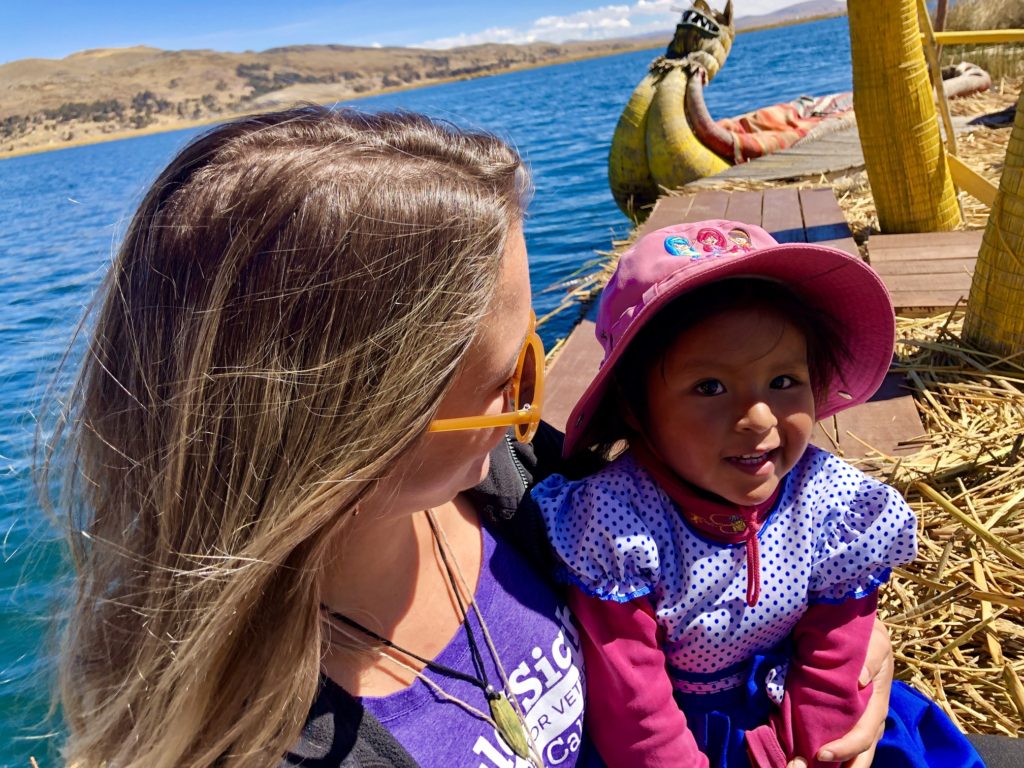
That wraps up our trip
Just remember that not everything goes to plan in Peru. We returned to Puno from the floating islands only to discover all the buses to Cusco were cancelled because of a political strike blocking the highways in the Andes. We had to wait until 11:30 pm for our departure and had to take an alternative route through the desert to get to Cusco with an added 5 hours to the trip. So be prepared to be patient with Peru. You find yourself in frustrating moments, but in the end it makes your next destination that much sweeter.

